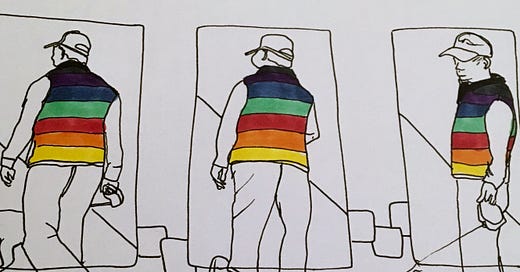Slice of Life Part 2
In 2019, I did a "slice of life" series for my 100-day project. I didn't complete the 100 days, partly because the timing that year conflicted with the start of ICAD, and I shifted to ICAD in June. But the series itself, a series of one-line contours of people based on photos I would snap when out and about, often while waiting to pick up my high school student, was a favorite. It was simple, almost deceptively simple, but I found it captivating.
Each day, I did multiple contour drawings, capturing people in motion, a couple of images a few seconds apart, a hip shifted, a foot raised, a different leg in front, the swish and swing of a skirt. While simple, I was enchanted with these drawings. There was something alive in the outlines, in the sense of movement and motion between the images. Most days, I did a series of drawings, often a trio of images, three moments, frozen. Slices of Life…. That was the name of the podcast episode in which I first talked about the series.
In some of the drawings that year, I added color or hatching or some pattern work. In some of the early ones, I worked across sticky notes, creating a geometric frame and layer within the contour. I always let a series evolve, knowing that small shifts along the way can help us find the space where we can sink in, the space where our lines will sing. We don’t always know at the outset exactly what a series will hold or wherein the magic will appear.
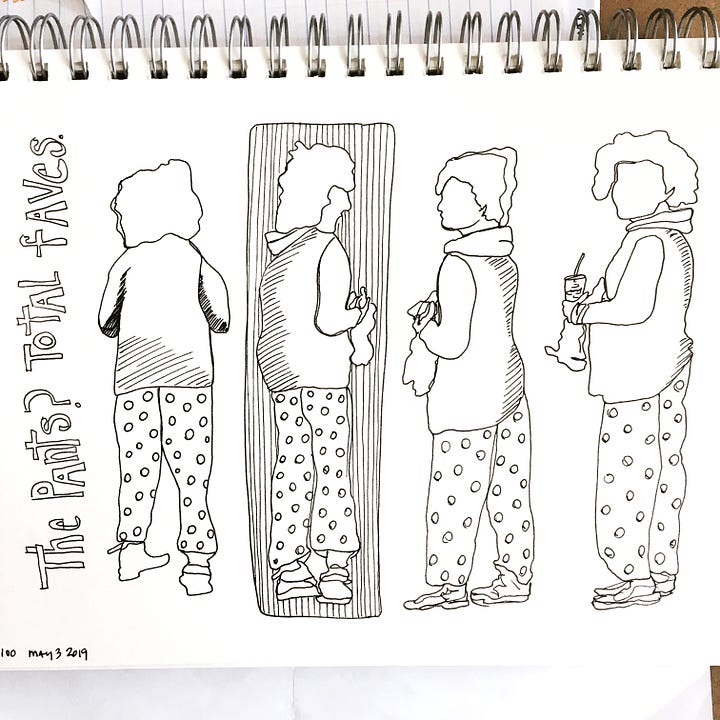
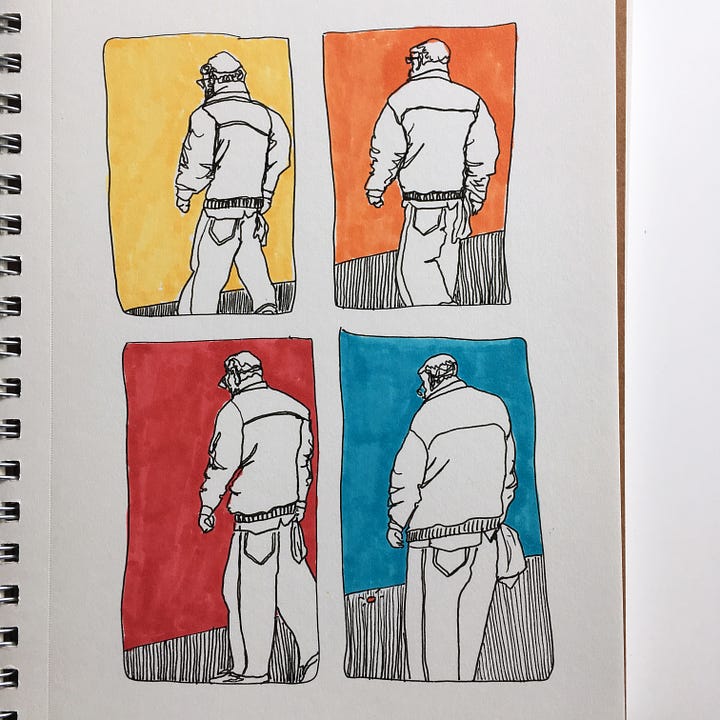
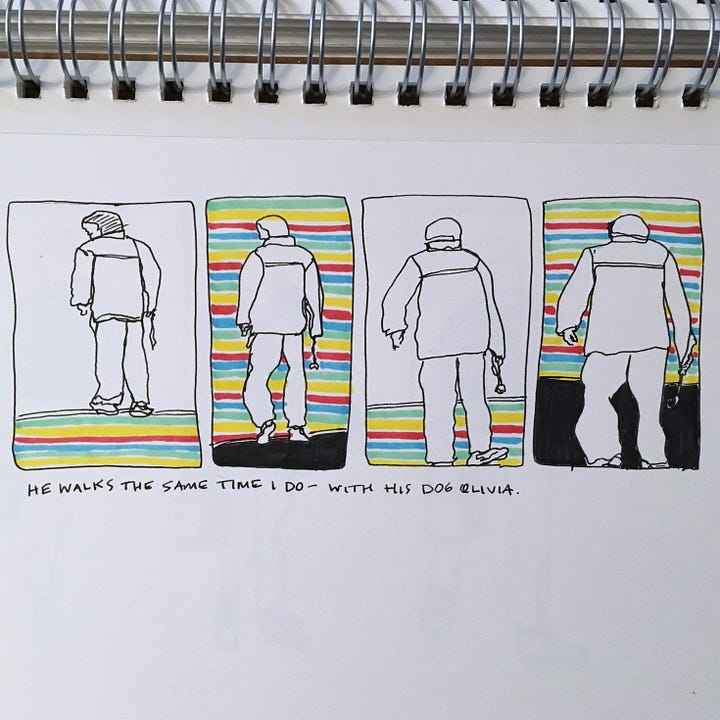
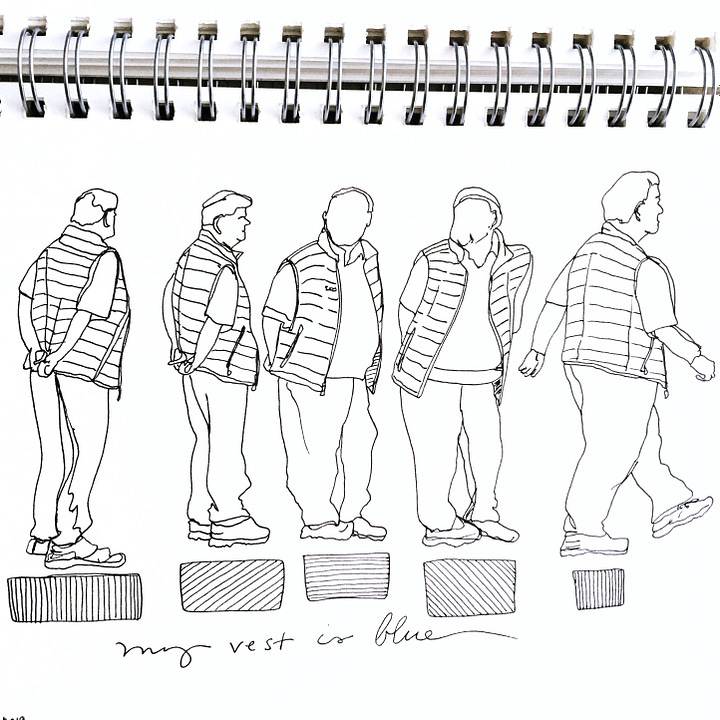
Fast-Forward to 2023
When debating about ICAD this year (2023), I found myself thinking a lot about the slice of life idea. I did still consider other series ideas. Partly, I know some people associate me with certain types of ICAD portrait work, and I LOVE those projects and those series. ICAD can be a powerful creative challenge in personal ways and can give you the chance to deep dive in a series, too. I always think of the 61 as a series. Doing that helps me find meaning and also gives me contours that I think help increase my chances of sticking with a long series.
After thinking about doing one-line contours again, I felt like I had a way to “do” ICAD 2023, a project I love, and still maintain my other work. But I still let myself think about other ideas. I considered portraits in various ways, and I had a specific portrait series idea that I would really like to do. It was hard to sideline it for now. I don’t like not being able to act on my ideas, and I am always cautious about starting a series or challenge if I think what I am doing will be “too simple” to share. But I was honest with myself this year. I know this isn't the right time for an in-depth series, and while the contours are simple in look and feel, I also really enjoy the challenge of them. I have a lot of things going on and a lot of creative projects that I am spending time with and that I want to spend time with. (That includes Illustrate Your Week, all of the writing I am doing, the podcast, and digital work!)


